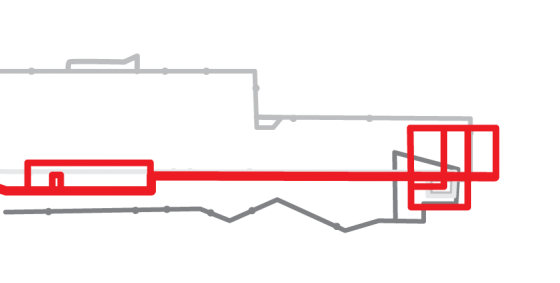Better transit option coming to MHCC campus
A growing population, safety and education hubs are at the heart of a planned eastside Portland transit project that could extend a bus rapid transit bus line all the way out to Mt. Hood Community College.
The proposed Powell-Division Transit Project is intended to better serve TriMet riders between downtown Portland and Gresham.
“You’ve got so many people riding it, and you know that your population is going to continue to grow, so how can we provide a better experience for people?” said Dana Lucero, who leads public engagement on the project for Metro, the Portland-area government and planning agency.
A steering committee comprised of elected officials, business owners, and community members has been gathering public input on the Powell-Division Transit Project for the past year.
“One of the primary themes of the whole project is that it’s an education corridor,” said MHCC board of education Chair Diane Noriega, who sits on the steering committee.
The plan is to have a rapid transit system in place by 2020 that will serve portions of Powell Boulevard and Division Street from downtown Portland (and Portland State University), to Portland Community College-Southeast, and on to Mt. Hood Community College, and their surrounding businesses and communities.
It would bring the Mt. Hood campus from the fringe of the TriMet transit grid to a destination point on a dedicated, frequent-service corridor.
“We’ve always been off the grid. Everything else is connected, then our campus is like, ‘Oh yeah, they’re over there,’ ” said Noriega.
Better connections for school students and professionals is key to the proposal.
“There are a lot more opportunities to think about really serving students and staff and high school students accessing the colleges, too,” said Lucero, of Metro.
To get from Centennial High School to MHCC takes roughly 40 minutes using TriMet; from Parkrose High School, it’s about an hour. Both of these high schools (and districts) are in the MHCC service area.
Right now, the ride on any TriMet bus in the area is difficult, especially on the 4-Division and 9-Powell routes. Those routes, and others in the corridor, serve 18,000 people every weekday, according to OregonMetro.gov.
When the project began, Noriega started driving around the corridor to see what the committee is up against.
“On Powell (Boulevard), I’m just horrified because there are whole families – moms with toddlers in stroller(s). There weren’t even any sidewalks, so they have to walk (in unsafe conditions) just to get access to a bus stop,” said Noriega.
As seen when transit expanded in other parts of the Portland region, an unintended consequence of making transportation easier is displacing residents as the area develops.
Part of the next step of the planning phase, according to Lucero, is to provide information and evidence to the federal government that those effects can be adequately mitigated.
“We have this whole process that will probably take about a year and a half where we really get a better idea of what we’re building, what kind of impact (it has) and how do we make sure that the communities get benefits instead of those (negative) impacts,” Lucero said.
The committee has reached consensus on a few details regarding the project: At the most recent steering committee, it was agreed that the new Tillikum Crossing suspension bridge over the Willamette River will serve the transit line from downtown to east Portland.
Also, a few routes were narrowed down to the best options. There are currently three options on the table for where the transit line will transfer from Powell Boulevard to Division Street, in southeast Portland.
Noriega and Lucero indicated that 82nd Avenue is heavily favored for shift, mainly due to its location in the newly dubbed ‘Jade District’ that is experiencing a boom in population and Asian-owned businesses.
That selection was easier because of a general consensus.
“We don’t have that in Gresham,” said Lucero. The trouble seems to stem from ambivalence toward the project from the community, she said.
To combat that, she said there will be a big community outreach effort this summer to get more information about the trade-offs on how the new line will work its way through Gresham.
One example: Regarding just where the transit corridor would best turn north-south through Gresham, “there was Eastman Parkway, Cleveland Avenue, and Hogan (Avenue), and the consensus was they all have pros and cons,” said Noriega.
Mt. Hood is an unquestioned terminus point, however: “The main thing is that they (route options) all end (here),” said Noriega.
The project’s next steering committee meeting is set for 4 to 6 p .m. on Monday, June 1, at the Church of Jesus Christ of Latter-day Saints on 9901 S.E Caruthers St. in Portland.


Leave a comment